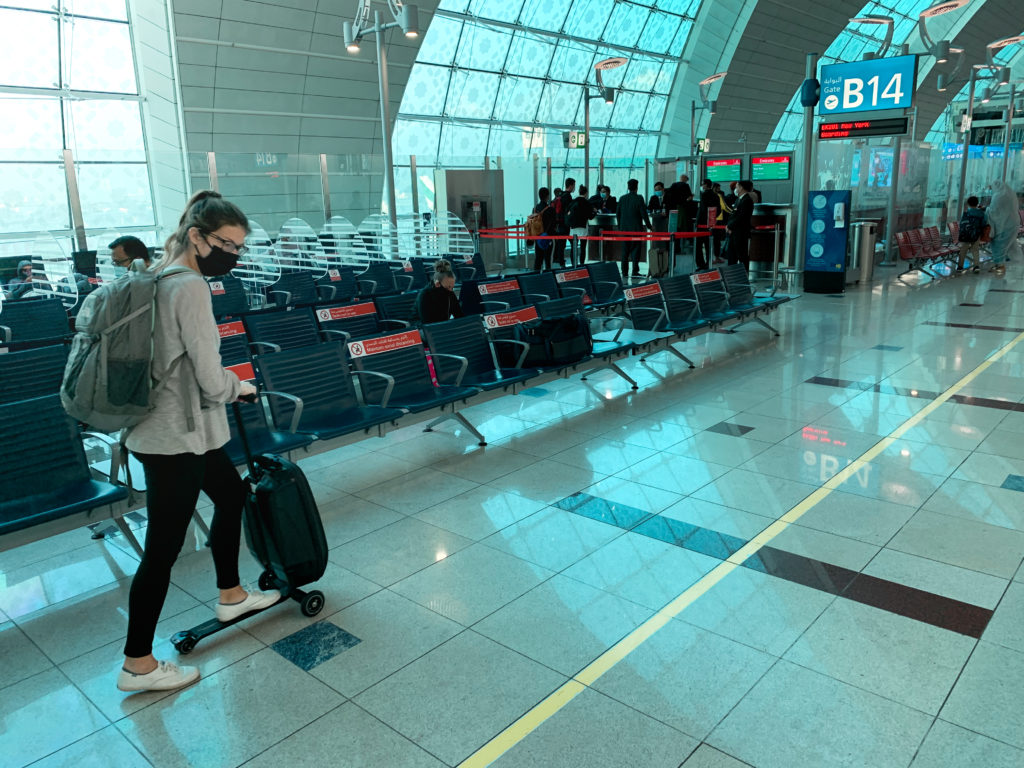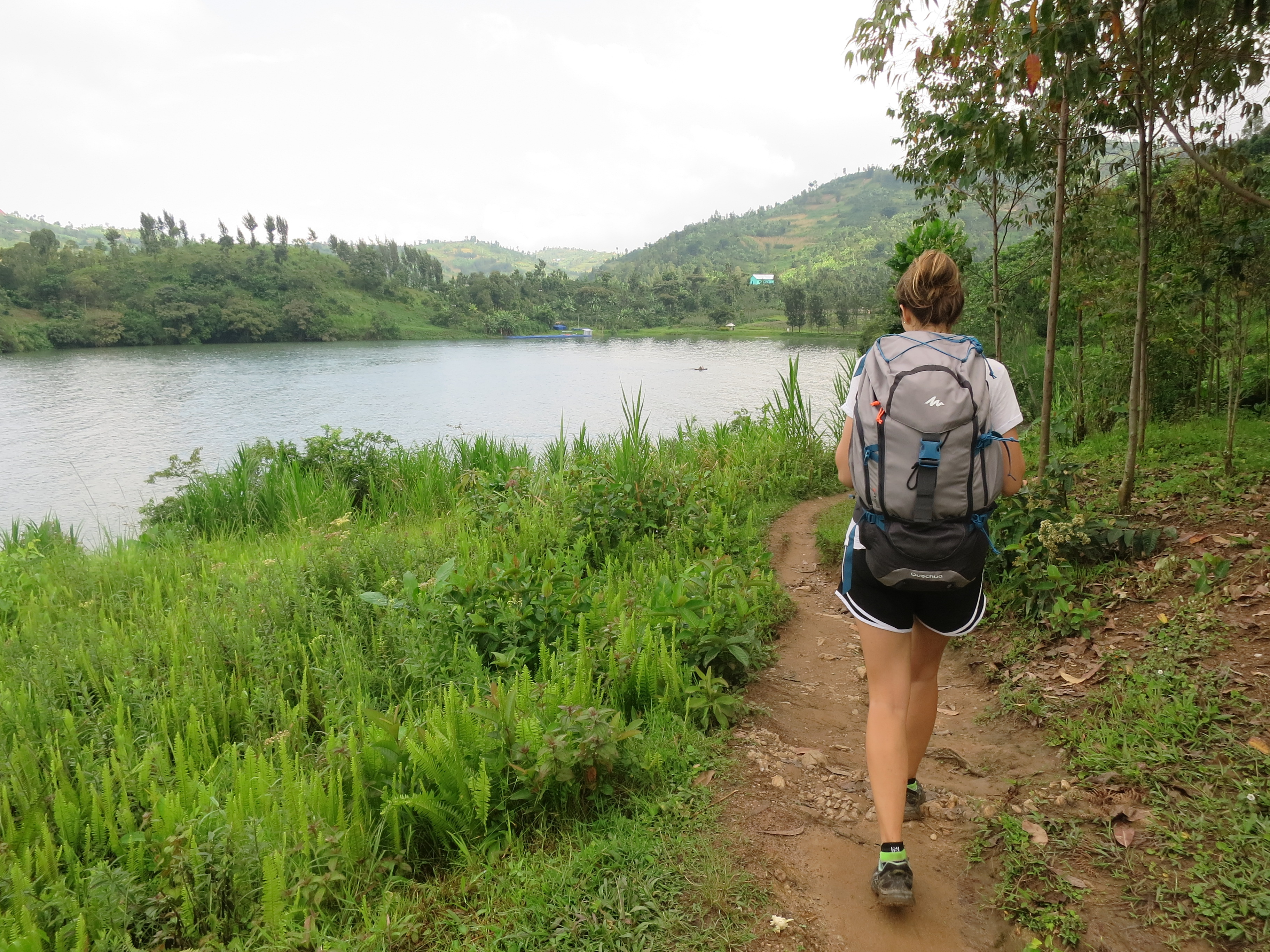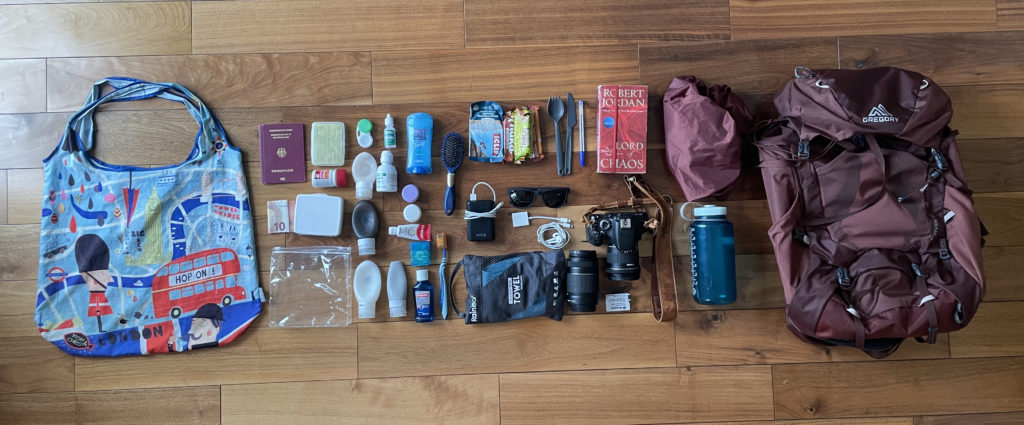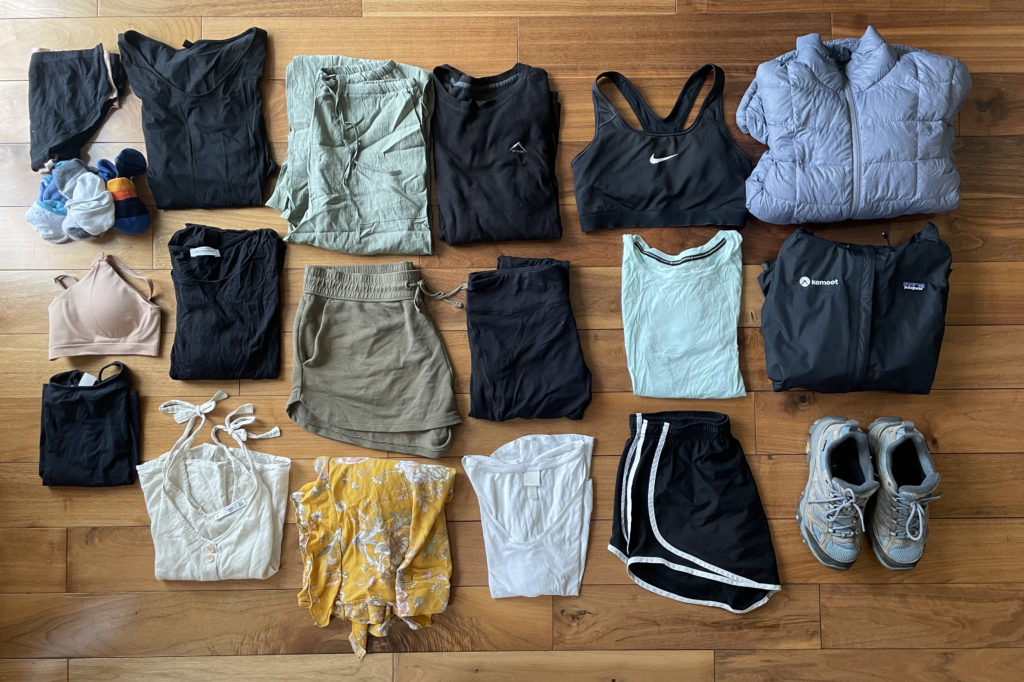Long gone are the days when airlines used to give you free check-in luggage on intercontinental flights. Nowadays, only the Middle Eastern airlines still include free check-in luggage on their long-haul flights. But for the most part, airlines will charge a fee for check-in luggage. Which means, the only free thing you can travel with is your cabin bag. And some budget airlines (ahem, RyanAir) even charge additional for that. Sometimes these fees can come out higher than the airfare.
So the trick is to pack light.
The good news is one cabin-friendly bag can get you pretty far if you pack smartly.

How large is a cabin bag?
Let’s start with the basics – the size you are restricted to.
Cabin bag sizes tend to vary marginally from airline to airline, so let’s just play it safe and say you’re limited to 55 x 40 x 20cm (that’s Ryanair’s maximum cabin bag size).
Generally, this cabin bag can only weigh between 8 to 10kg. (Though you can trick the system by stuffing your pockets with heavy items or hanging a camera from your shoulder rather than stuffing it in your bag.)
I’ve only ever seen airlines check the size and weight occasionally, and if then the weight at the check-in counter and the size at the boarding gate. Norwiegan, RyanAir and EasyJet have all been known to check.
What is the best cabin bag for travel?
Given the weight and size restrictions, the secret is to travel with a soft-bodied bag with no wheels. Not only are these light, but you can also manipulate their size if you are asked to prove it fits within the carry-on size limit.
If you don’t anticipate you’ll be carrying your bag around much, your best bet is a duffel bag. They are the lightest option. Aim for a bag that slims down on the frills like inner pockets and heavy materials. You can easily get one that’s a bit bigger than the size restrictions so that you can carry everything you need between flights without a problem, but still bring the bag onboard when the time comes. The downside is they can be uncomfortable to carry around for a long time.
If you’ll be moving around a lot, visiting many cities and possibly walking all day with your bag, you should consider a backpack. A normal 30L backpack (like the type you’d use for day hikes or to go to school) is fine, but if you want to max out your space, you can go up to 45L.
I’ve got the Gregory Maven 45 which is spacious and also comfortable. I can easily carry it on multi-day hiking trips. Decathlon also sells decent bags if you don’t want to commit or spend that much. I did that when I went to Rwanda and Uganda. These bags are marginally larger than the official cabin size, but I can squish the bag if needed. So far, no airline has said it’s too big.

How do I pack my essentials?
Toiletries are one of the biggest space eaters and can be very heavy. Plus, you are only allowed to bring a one litre bag full of liquid containers onboard. And each container needs to be smaller than 100ml. So invest in reusable travel toiletry bottles.
Many pharmacies sell travel-sized toiletries but these tend to be expensive. Rather get reusable bottles. The best are the soft silicon bottles for things like shampoo and sunscreen. For smaller items, like face wash, small hardshell containers are useful.
You can find these at pretty much any sports shop or online.
What else should I pack?
Honestly, what else you decide to pack depends on where you are going and what activities you plan to do. That said, do not pack based on how many days you are travelling – you can always wash your clothes along the way.
Some things I tend to pack for every trip include:
- Good walking shoes (either hiking sneakers or another pair of durable shoes)
- A lightweight camping towel, in case towels are not included or I plan to go for a swim
- Plastic camping spork (fork/spoon) and knife, so that I can grab a yogurt or bread if I don’t feel like eating out
- Nylon drawstring sports bag, so I don’t always need to lug my main bag around
- Steripen, to sterilise the tap water if I am going somewhere where the water isn’t safe to drink, like Brazil
- Silicon earplugs, if you’re planning to stay in hostels or loud cities
Below you can see what I packed for a one week hiking and sightseeing trip in Albania.

